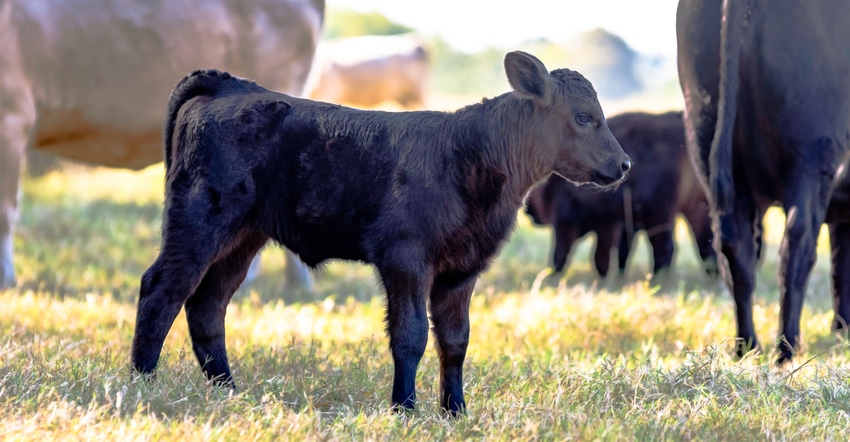Regulatory hurdles continue to halt progress of industry in using gene editing in cattle.

Since the earliest domestication of livestock, farmers have been making improvements to their herds through phenotype selection.
But recent advancements in understanding cattle genomics and in the field of gene-editing have the potential to unlock a whole new era of making genetic improvements in cattle herds quicker and more precisely than ever before.
Complementary technology
Tad Sonstegard, CEO of Acceligen, explained the technology of gene editing. He spoke at the 2022 Cattlemen’s College in Houston.
Genome editing is a breeding method that uses gene editing CRISPR-Cas9 technology to introduce traits — or turn off traits — in the genome of an animal. It’s already in use in the plant world.
The beauty of using gene editing, Sonstegard explains, is it can target the parts of the gene that have specific trait and make changes in a generation, rather than waiting on generations of slow change through phenotype selection. This technology can be used in cloning and in creating IVF embryos.
But it’s a long way from proof-of-concept to commercialization. Acceligen has been working on this since 2013, and has successfully managed 10 different events for six traits in four geographies, he said.
In cattle, Acceligen is hoping to be the first to market on five traits:
Polled. Humans have been selecting for the polled trait in cattle for thousands of years. This animal welfare trait is found on a common allele, not a gene. Acceligen has found a way to introduce this natural allele into the genome of horned cattle, working similarly to the way crossbreeding to Angus creates naturally polled calves.
Milk yield QTl sensing solutions. More than 70% of the world’s beef and dairy cattle are produced by smallholder farmers in poorer countries. By using gene editing, more efficient cattle can be produced that improve milk output and have reduced environmental impact.
Heavy muscling. This gene-edited trait knocks out the myostatin gene that exists naturally in the Belgian Blue cattle breed. resulting in a calf with heavier muscling.
Coat color. The Angus breed has been around for hundreds of years and has the top beef marketing program in the nation. Working with Trans Ova, Acceligen has been able to use CRISPR-Cas9 gene editing to make two changes to the genome, and turn a black-hided calf into a red-hided calf. And make that red gene dominant, so that when that calf is eventually bred to a black-hided animal, the result is a red calf.
Slick coat. There are massive opportunities for gene-edited cattle with slick coats in the South American marketplace of the future. As cattle feeding operations grow in Brazil, a Nelore-Angus crossbred animal has become more desired. However, Angus cattle, with their longer coats, are not suited for the heat of Brazil. Using gene editing, Acceligen can create black-hided Angus bulls with slick coats that will tolerate the heat and be useful in F1 breeding programs with the bos indicus Nelore cattle.
Sonstegard says the benefits of gene editing in livestock mean single-generation genetic improvement can be made, with little to no disruption of the current breeding program. It provides new opportunities for disease resistance and to enter into emerging markets around the globe.
This tool can be used to reduce the carbon footprint of cattle, while still improving product quality and transforming the animal’s well-being. It also provides biosecurity of production lines.
Regulatory matters
Chase DeCoite, director of animal health and food safety policy for the National Cattlemen’s Beef Association, says the regulatory situation for gene-edited livestock is in a bit of limbo.
“We’re asking for a regulatory framework that is similar and that already exists for gene-edited crops,” DeCoite said.
NCBA policy states that the organization’s members believe that regulation authority of gene-edited beef cattle resides with the USDA and not with the Food and Drug Administration, since USDA already regulates gene editing in plants under the Plant Protection Act. FDA has chosen to treat gene-edited livestock the same as if a new animal health drug were being introduced, he added.
On Jan. 19, a memorandum of understanding was signed between USDA and the Department of Health and Human Services that agreed that USDA would provide oversight of farm animals that have been modified or developed through gene editing for human food consumption, from premarket reviews to postmarket food safety monitoring. Meanwhile, FDA will continue to review intentional gene-edited animals that are intended for biopharmaceuticals and non-heritable genetic alterations as well. With the transfer from the Trump administration to the Biden administration, movement on this has stalled.
But NCBA members continue to work on the topic, because the beef industry thinks there’s tremendous potential, DeCoite said. Potential to produce cattle that create less methane and require less water; and produce more meat with fewer resources that’s more resistant to potential diseases and therefore requires fewer antimicrobials — the list of gamechangers is long.
About the Author(s)
You May Also Like





